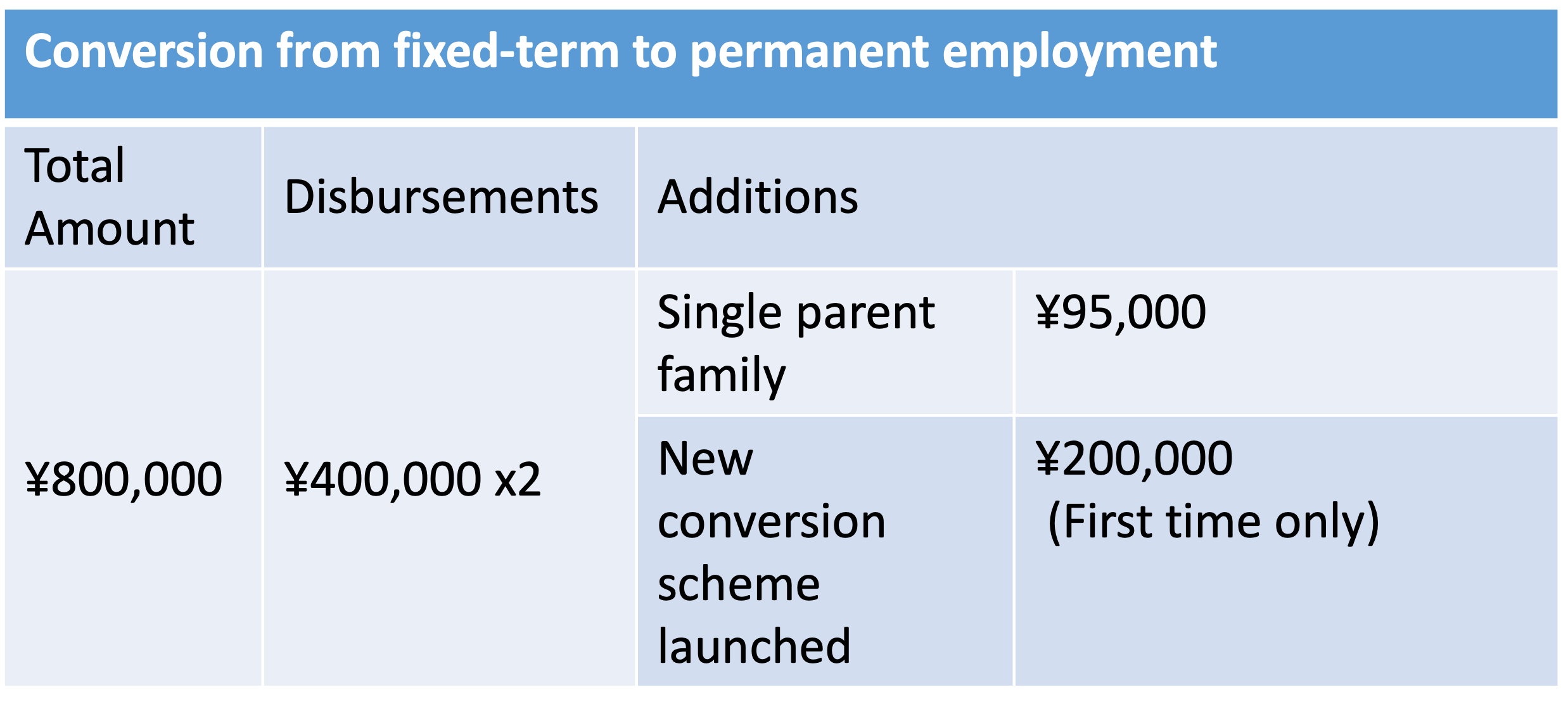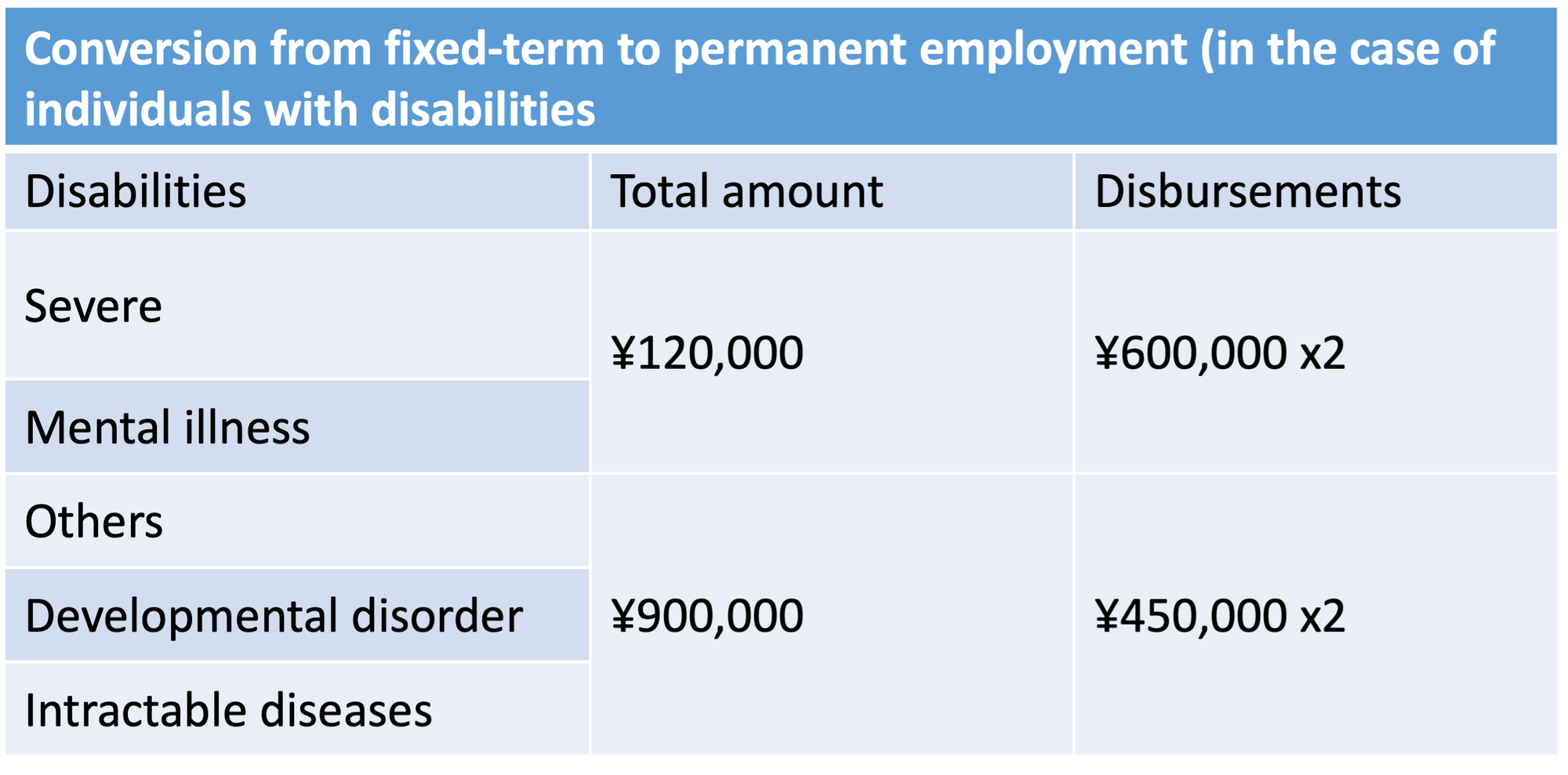HR-Focused MHLW Grants 2/3: For companies converting fixed-term employees to full-time
In the previous article, we introduced an MHLW grant available to companies that employ single mothers and people with disabilities, which can be used for HR purposes. This article explains the grants available to companies that convert fixed-term employees to full-time status.

Don't miss out: Grant funding changes coming in April
This article explains the Grant for Career Development (キャリアアップ助成金), which supports companies that convert contract or fixed-term employees to permanent positions*. Crucially, the amount for this grant is likely to be halved from the next fiscal year, starting in April. This means that those who want to receive the full grant amount must act quickly.
In Japan, the terms 'hojokin' (補助金) and 'joseikin' (助成金) both translate to 'subsidy' in English, particularly in the context of the government programme. For clarity, in Small Business Japan, we will use 'subsidy' when referring to hojokin (typically from the METI) and 'grant' when referring to joseikin (typically from the MHLW).
We sought the expertise of Mr Tomohiko Narai, a sharoshi, to understand the procedures and key points.
You can also contact Mr Narai for further assistance via his corporate website.
This article is for informational purposes only and does not constitute an advertisement for Narai's services.
Grant for Career Development
MHLW supports companies converting contract or fixed-term employees to permanent positions
Grant disbursement:
It differs depending on the prefecture. For example, in Tokyo, it takes around 9-10 months, while in Chiba, it takes approximately 3 months. Applications submitted at the end of the fiscal year may take longer to process.
This grant is paid directly to the employer, not the employee.


The time it takes to receive the grant varies depending on the prefecture. For example:
- Tokyo: Approximately 9-10 months.
- Chiba: Approximately 3 months.
Applications submitted at the end of the fiscal year may take longer to process.
Required Procedure
To be eligible for the grant, companies must complete the following steps:
- Prepare and submit career development plans.
- Establish a conversion clause in employment regulations to distinguish between permanent and fixed-term contract employees.
- Convert fixed-term contract employees to permanent employees.
- Increase the fixed wages of converted employees by 3%.

Convert to permanent: ¥800,000 grant per employee but attention: Grant amount to be halved from April
Applying for this grant requires careful attention to detail. Here's some expert advice from Tomohiko Narai, an experienced sharoshi, to guide you through the process.
Q: This seems like a grant you recommend.
TN: Yes, definitely. Many companies don't apply due to misconceptions about fixed-term employment, but I highly recommend it. The grant amount will likely be halved after April, so it's best to apply during the current fiscal year.
Q: Is there still time to apply for the grant?
TN: If your salary cut-off date is after the 10th of the month, we might be able to make it if you consult with me by the end of February. However, the sooner you reach out, the better.
Q: You mentioned some misconceptions about the grant. Could you give some examples?
TN: Certainly. Some companies might think preparing a career development plan is too much work, but it's actually quite simple.
Another misconception is that only companies with fixed-term employees can apply. However, even companies that currently only hire permanent employees can adjust their policies to become eligible. To explore the possibilities, it's best to consult with a sharoshi familiar with grants. Eligible employees are those who were initially hired on a six-month or one-year contract.
Even though it's almost the end of the fiscal year, companies without existing work regulations have a unique advantage. If you apply before the end of the fiscal year and your company doesn't yet have a work rule with a conversion clause, you can receive an additional ¥200,000 for the first employee converted to a permanent position. This means the grant for the first employee could be as high as ¥1 yen if the conversion is completed by March.

Q: Many companies don't have work regulations. It seems difficult to create them in a short time.
TN: It's essential to follow the steps outlined above. Creating work regulations from scratch can be time-consuming, so seeking guidance from a social insurance and labour consultant, especially one familiar with grants, is advisable. They can help you establish the necessary clauses, whether you're creating new regulations or amending existing ones. The key is to ensure the regulations are aligned with the grant requirements.
Q: Can an employee who is eligible for this grant also be eligible for other grants, such as the one for single mothers and individuals with disabilities?
TN: Yes, that's possible. It's one of the reasons this grant is particularly attractive. However, some technicalities are involved, so it's best to discuss this with sharoshi, who is familiar with the grant.








